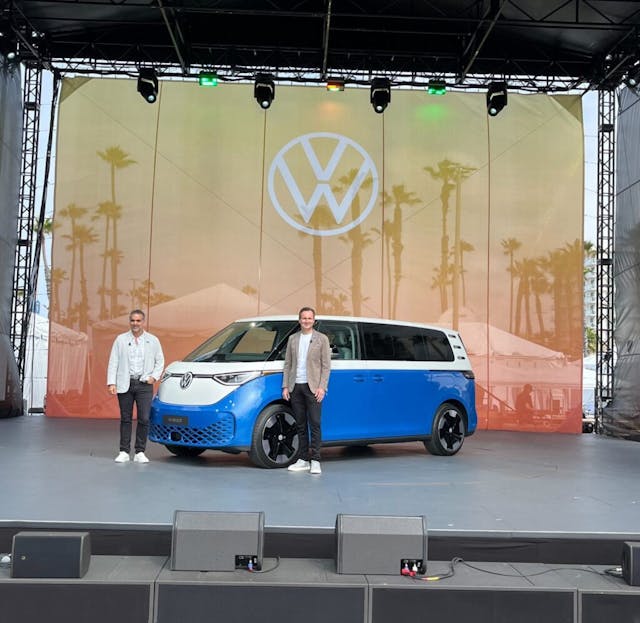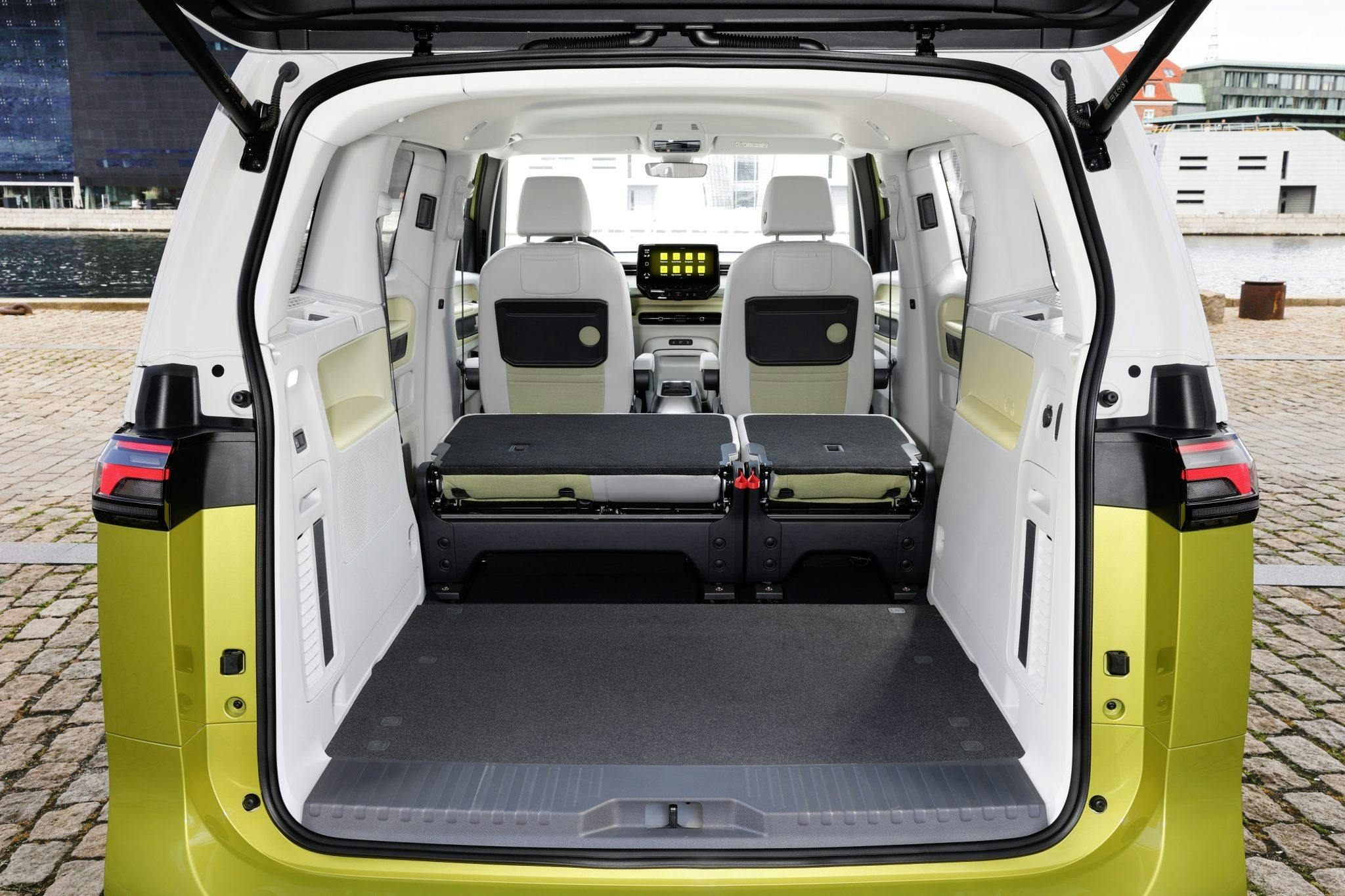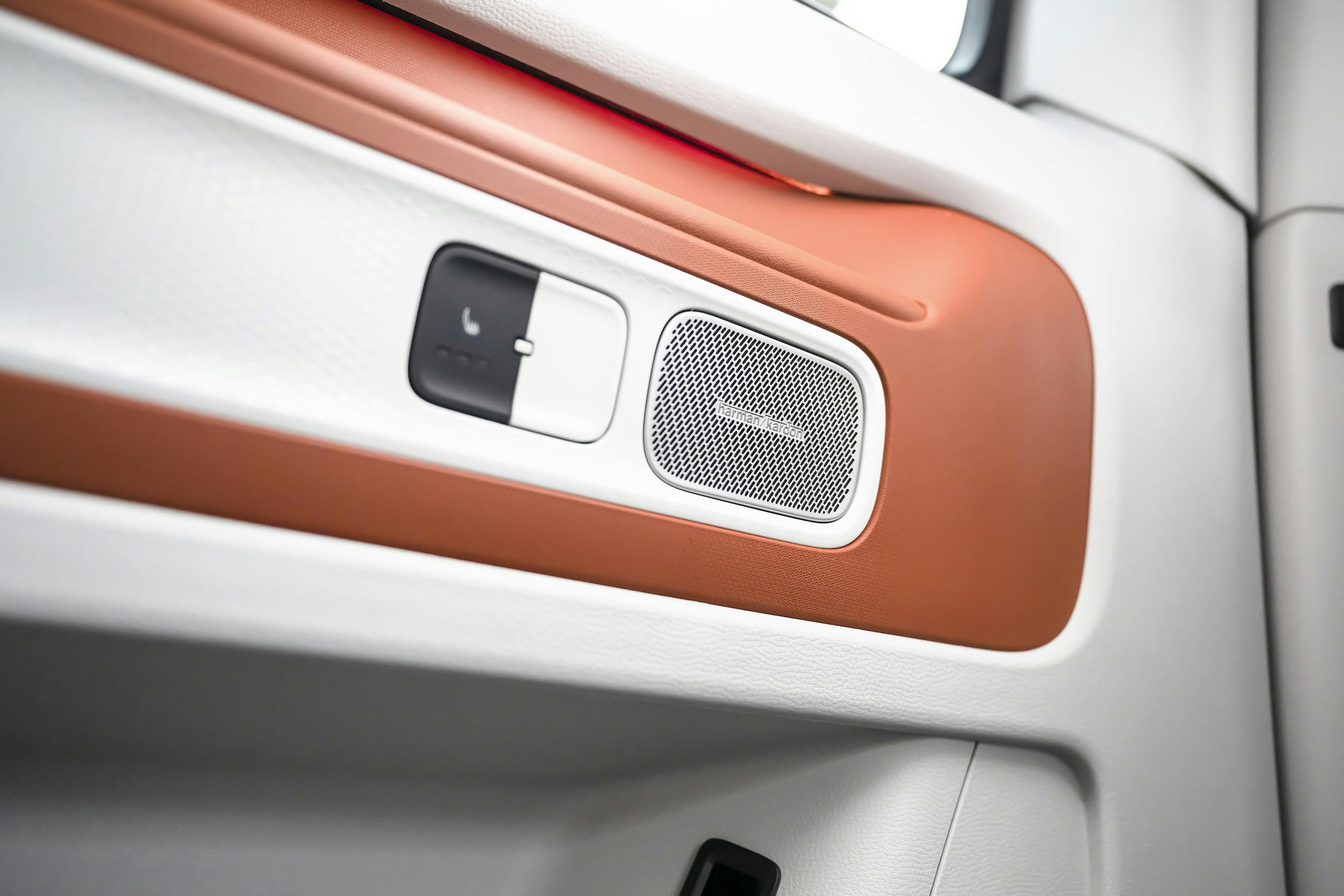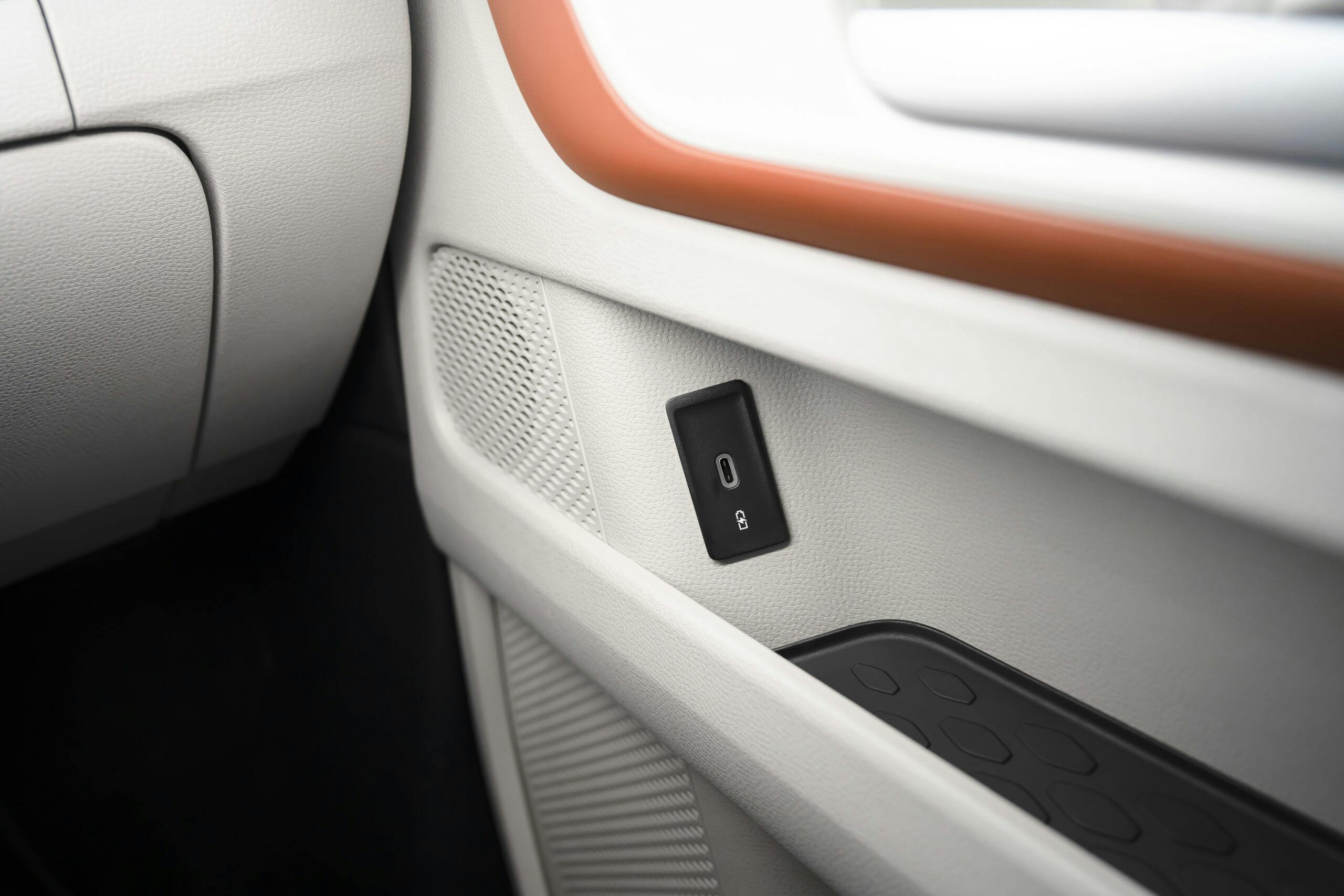The Volkswagen ID. Buzz is more Mediumbus than Microbus
Call it cool, call it retro, call it Bussy McBussface, just don’t call it the new Microbus.
Fine, call it the new Microbus if you really want to. Volkswagen certainly would like that. At the reveal of the new electric VW ID. Buzz in seaside Huntington Beach, California, the company laid on the nostalgia as thick as fresh Kartoffelsalat. A DJ calling himself “Radio Woodstock” laid down one purple-haze track after another while flower-power hippy types mingled among more than 280 examples of T1-T5 Microbuses, Vanagons, Eurovans, Kombis, Crew-cabs, and pop-top Westfalias driven in by local collectors. VW execs even proclaimed June 2 to be International Volkswagen Bus Day.

The original 1949 to 1967 (in America) T1 and T2s are beloved nostalgia icons that are today highly collectible. A 1964 model parked at the ID. Buzz launch had a for sale sign on it and an asking price of $64,000. It was pointed out at the Buzz event that the Microbus has been at the epicenter of American culture and history since it was launched. It helped spawn the surf craze, Nike founder Phil Knight sold his first sneakers out of the back of one, and Steve Jobs sold his Microbus to get the money to start Apple Computer.

But the ID. Buzz, due in showrooms next year with an expected price of around $60,000, ain’t exactly a Microbus. For one thing, Volkswagen’s designers specifically backed away from making their new electric van too retro. “We came up with tons of sketches. A lot of sketches,” said lead exterior designer Einar Castillo Aranda, a native of Mexico City whose previous work was on the VW Polo subcompact.
“Round eyes. Square eyes. In the end we decided to go with a kind of integration of the headlights with the side lines. You don’t really want to go full retro. It only fits for a few cars, and we didn’t want to go that route. We’d like to push it a bit more forward.”
Another reason the ID. Buzz is not the new Microbus? It’s not micro. The U.S. will only get the XL-size version, with three seat rows and a 192.4-inch overall length. At roughly 16 feet it’s about the length of the VW Atlas SUV, which I don’t think anyone would call “micro.” Europe has the option for a shorter, two-row version.
Granted, 16 feet doesn’t seem so long when you realize the original Type 1 and 2s were 14 feet and change. And a 2023 Toyota Sienna, at roughly 204 inches, dwarfs the new Volkswagen. So if the ID. Buzz is not the new Microbus, let’s call it the new Mediumbus.
The ID. Buzz will debut with an upsized 91-kWh battery (the shorter Euro version gets an 82-kWh pack) that should be good for at least 280 miles depending on the configuration. A 282-hp rear-drive base model will slot under a two-motor, 335-hp all-wheel-drive version. Options include a two-tone paint job like the original Microbus, a bevy of bright exterior colors, three interior color options, and an electrically dimming panoramic sunroof that is five and a half feet long.
One downside to electrification: a relatively high floor inside and no fold-into-the-floor seating, as in other minivans, due to the battery pack being in the way. However, VW promises there will be a camper version for the U.S. along the lines of the California model sold for years in Europe (but not, ironically in California, or any other U.S. state).

It’s been over 30 years since VW dumped the flat-faced shape of the bus, the last one being the T3, known in the U.S. as the Vanagon and dubbed the “waterbox” for the water-cooled flat-four installed in later versions. Its replacement, the T4 of 1990, moved the engine to the front, mounted within a pronounced schnoz, while the driver shifted behind the front axle for better crash protection. Subsequent generations of Volkswagen vans have all sported Romanesque noses.
One thing Aranda and his colleagues are very pleased about is being able to move the ID. Buzz’s overall shape closer to that of the original monolithic box. That’s because of the switch to electric, which removes the engine front the front and all the necessary structure required to keep its bulk out of the passenger compartment in a frontal crash.
“Before with an ordinary combustion engine, it was impossible, you always ended up with a bonnet (hood) on the front, which was not anymore this [original] shape,” said Aranda. “Now with this new platform, we’ve been able to put the wheels to the corners to reduce the front overhangs, and move the driver forward in the cabin to produce the bus shape again. We are able to return to the true shape of the car.”
Shape, perhaps. Size, not so much.
***
Check out the Hagerty Media homepage so you don’t miss a single story, or better yet, bookmark it. To get our best stories delivered right to your inbox, subscribe to our newsletters.
























Put a flat four in the back and a gas tank as God intended then we’ll talk. Former 72 Westfalia owner here.
For $60,000 I should have the option of the short version.
Ditto!!
I recently returned from Wolfsburg. As a current owner of 1985 Vanagon Westfalia Weekender (T3) and 2002 Eurovan (T4) I can share my biased opinion & experience test-driving a European ID Buzz in the city of Wolfsburg. First impression is that A-pillar and huge dash look like they will be distracting. To the designers’ credit, those things are quickly forgotten once you start driving. What I never lost was the impression that I was driving a fairly large SUV of a slightly different forward configuration. Summary: No, it’s not what van drivers were hoping for. It is not space efficient (that’s why they want to send us the longer one). It’s not fun to drive in town or on secondary country roads like a Vanagon or T2 or T1. The long one will probably be a decent highway cruiser but most of my Eurovan trips are over 200 miles each way and I would have huge range anxiety. It doesn’t look like there is an electric van in my future. On the other hand, I would buy a T6.2 (yes, you read that right) California in a heartbeat. Lots of us retired folks have the cash to buy a California or Ocean VW camper van. Too bad VW doesn’t want our money. VW took so long to “try” to come up with a new “micro-bus” that most of us baby boomers are now aging out of the market for same. What a colossal waste of time, VW.
Bussy McBussface. Yeah!
Will someone please explain why no other car manufacturer still cannot match (or, ideally, beat) the battery range of a Tesla or Lucid? Or why every EV review glosses over the obvious range inferiority on offer from every other brand or, worse, simply ignores it? Range anxiety is a real, VERY real, concern for any EV owner and it will continue to be until our charging infrastructure grows exponentially. Is Tesla and Lucid simply THAT much better at building EVs?
Call it the MaxiToast as it looks like a Toaster on wheels.
Apples and oranges really. Comparison to the original bus is ridiculous. This should be judged on its own merits. Is it comfortable? Is it reliable??? 60k is a lot of cash for something that looks like it’s waiting to heat up my pop tart, but it’s kind of cool of it excels at what it was designed to do. Bit the current VW quality is suspect at best. Open minds folks!
VW needs to offer the US buyers the shorter version. Not everyone needs (or wants) a large vehicle.
Ditto!!